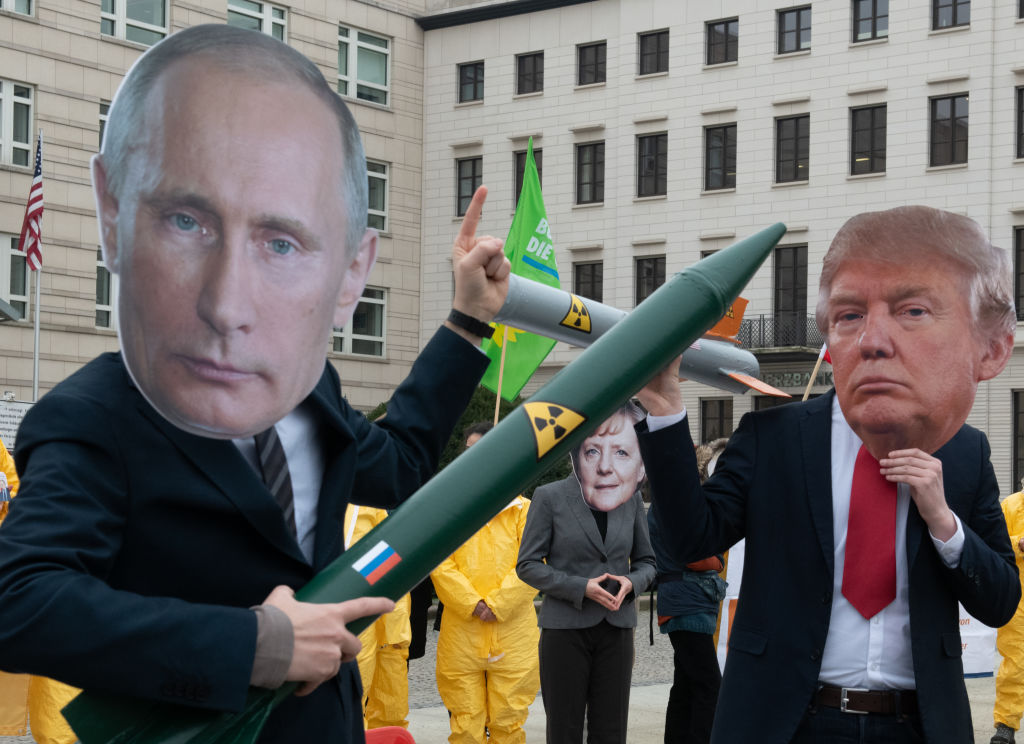
The Intermediate-Range Nuclear Forces Treaty expired on 2 August, after a period of over 30 years as one of the landmarks of nuclear arms control. Opinions vary over how much that matters. But there’s one thing we should be able to agree on. If a prize is ever awarded for the most inappropriate nickname for an arms control agreement, ‘Intermediate-Range Nuclear Forces Treaty’ is going to be a strong contender. The only ‘forces’ it restricted were ground-launched ballistic and cruise missiles intended for weapons delivery, their launchers and support equipment. ‘Intermediate-range’ was only a partly accurate description of the 500- to 5,500-kilometre missile ranges to which it applied.
Worse, the short title suggests that the treaty applied solely to ‘nuclear’ weapons. It didn’t. It applied to all ground-launched intermediate-range and shorter-range missiles, regardless of whether they were nuclear- or conventionally armed.
The treaty’s full title is
The Treaty Between the United States of America and the Union of Soviet Socialist Republics on the Elimination of Their Intermediate-Range and Shorter-Range Missiles. No ‘nuclear’ there. But somehow that word made it into the short title, and it became ubiquitous. Readers who care to run a word search on the
text of the treaty will find it barely uses the word ‘nuclear’.
First rule of arms control agreements: read the text—and the full title. An arms control treaty is like a problem in a law exam: there are no spare words.
In complying with their obligations under the treaty, the US and the USSR destroyed
more than 2,500 missiles and their launchers. Now, anyone familiar with Cold War missiles will know that
the systems eliminated by the treaty—the Pershing II, BGM-109G and Pershing IA on the American side, and the SS-20, SS-4, SS-5, SS-23 and SS-12 on the Soviet side—were, primarily, nuclear-armed missiles. (The SS-23 clearly came in a conventional variant, since there were arguments over which variant the Soviet Union
transferred to East Germany, Czechoslovakia and Bulgaria before signing the treaty, an action the Americans later labelled an exercise of ‘bad faith’.)
But the treaty wasn’t anti-nuclear; it’s best seen as an exercise in reinforcing strategic stability. Indeed, it went out of its way to salvage the nuclear warheads deployed on the designated systems. As President Ronald Reagan wrote in
his briefing to the US Senate:
Paragraph 3 of Section II states that before a missile arrives at the elimination facility, its nuclear warhead device and guidance elements may be removed. Nuclear warhead devices and guidance elements are not required to be eliminated because destroying them would be meaningless unless the manufacture of new such items was also prohibited. Also, since warheads are small, verifying compliance with such a prohibition would be extremely difficult. Furthermore, the retention of the fissionable material from the warheads conserves resources necessary to US national security.
Waste not, want not.
The treaty successfully neutralised a growing instability in both Europe and Asia in the 1980s, and did so by cutting up the delivery vehicles upon which that danger rested. Moreover, it came to have a symbolic importance greater than the sum of its parts. That symbolism came from the treaty’s outright ban of an entire class of weapon-delivery systems and, thus, its implication that the nuclear-armed great powers could, eventually, find their way to a post-nuclear world.
The demise of the treaty, precipitated by years of Russian non-compliance within and the vigour of Chinese missile production without, carries its own messages. Great-power competition is back. Arms control violations have consequences. Future arms control must be about more than just the American and Russian arsenals. Strategic stability must be forged anew.
Notwithstanding a degree of alarmism in media reporting, however, there’s little evidence that arms racing is back. In particular, there’s little sign that
a new wave of nuclear weapons is about to break upon us.
American production and deployment of ground-launched missiles previously outlawed under the INF Treaty seems limited and slow. The US is apparently focusing its efforts on
two missiles: a cruise missile with a range of about 1,000 kilometres and a ballistic missile with a range of 3,000 to 4,000 kilometres. But the second of those might not be ready for deployment for another five years. And neither missile is being built in a nuclear-armed version. The revolution in guidance technologies since the 1980s means conventional warheads are quite capable of destroying an increasing range of point targets.
The new US secretary of defence, Mark Esper, started some hares running when he
suggested recently that he’d be looking for places in Asia to deploy new ground-launched missiles. Because of the mistaken but widely held view that the INF Treaty was principally a treaty about nuclear weapons, some might have thought the US was pressuring us to accept deployment of nuclear-armed missiles in northern Australia. It wasn’t. It wasn’t even requesting the deployment of conventionally armed missiles here.
In relation to the two US missiles we know of, there’s almost no chance that either will be deployed in Australia. Even the longer-range missile couldn’t target China from here.
 Print This Post
Print This Post